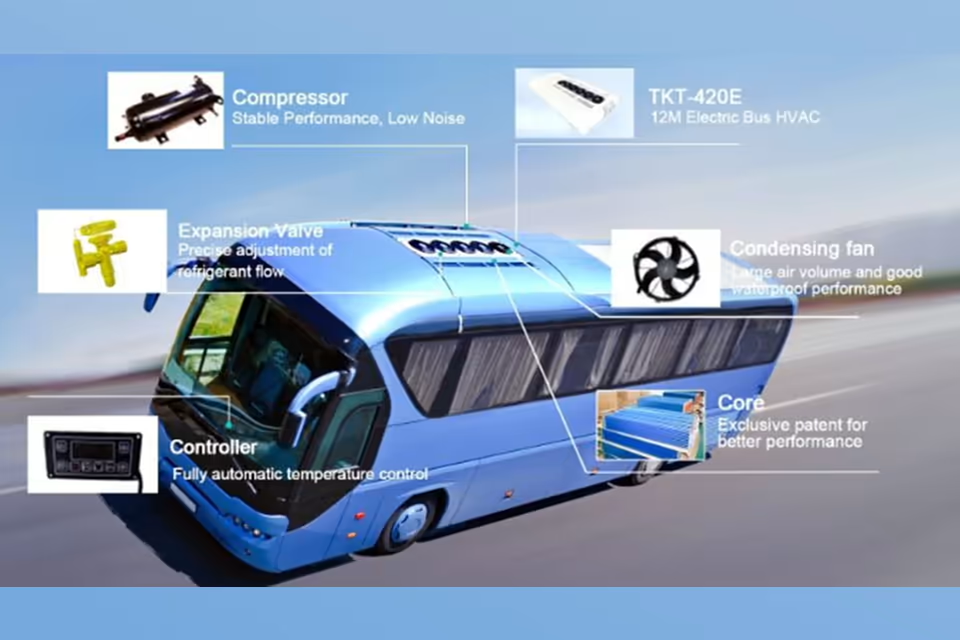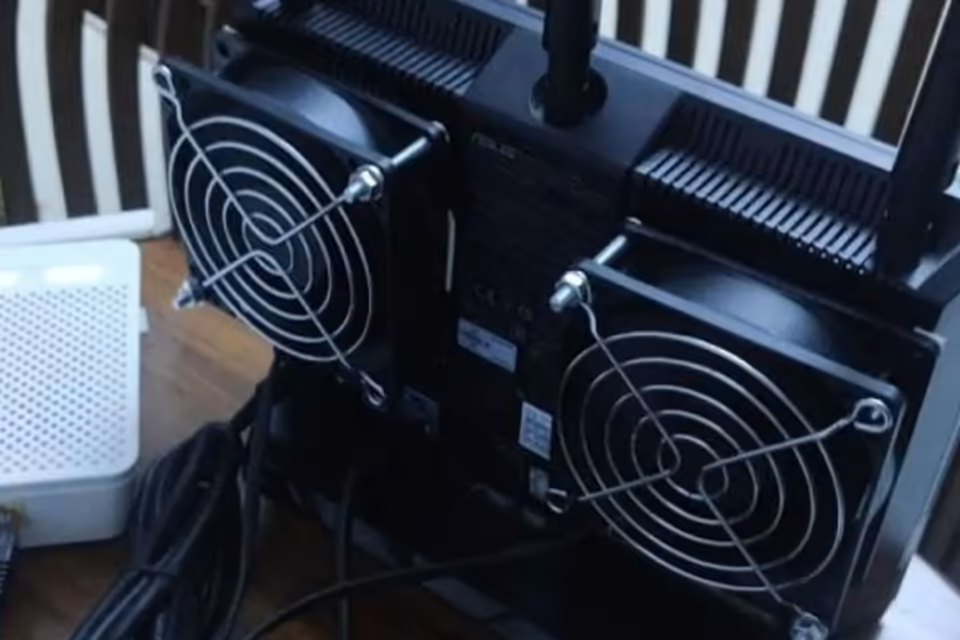The distinctions between fans and blowers are crucial for engineers and designers across various industries, as each device serves unique functions in air movement and ventilation systems. Fans are primarily used for general air circulation, providing broad, low-pressure airflow suited for cooling and exhaust applications.
In contrast, blowers generate higher pressure and velocity air streams, making them ideal for specific applications like material handling and pneumatic conveying. Understanding these differences is essential for selecting the appropriate device to ensure optimal performance, energy efficiency, and operational reliability in a given application.
The evolution of fan and blower technology has a rich historical context, beginning with rudimentary air movement devices in ancient civilizations and advancing through the Industrial Revolution, which significantly increased the demand for effective air circulation solutions.
The introduction of electric fans in the late 19th century marked a pivotal turning point, leading to rapid technological advancements in the 20th century that further differentiated fans from blowers based on their design and operational characteristics. This progression has also included innovations aimed at enhancing efficiency, reducing noise, and integrating smart technologies, reflecting the growing importance of sustainability and operational performance in modern engineering practices.
The operational differences between fans and blowers are often highlighted in various applications, with fans typically delivering low-pressure airflow, suitable for environments requiring substantial air volume. Conversely, blowers excel in situations demanding high-pressure air movement against resistance, such as in industrial vacuum systems or pneumatic applications. These key distinctions impact not only design choices but also energy consumption and maintenance considerations, making it vital for engineers to understand the specific requirements of their projects to avoid inefficiencies and unnecessary costs.
In addition to their functional differences, fans and blowers also carry social implications, particularly in workplace environments where air quality and energy efficiency are paramount.
As industries increasingly prioritize effective ventilation solutions, the adoption of advanced fan and blower technologies contributes to improved public health, reduced energy consumption, and adherence to safety regulations. The integration of these devices not only addresses immediate operational needs but also aligns with broader environmental and economic goals, shaping a more sustainable future for various sectors.
Historical Context
The evolution of fans and blowers has a rich history that traces back to ancient civilizations, where simple hand-operated devices were employed for cooling and ventilation purposes. The earliest forms of fans were constructed from natural materials like feathers and leaves, serving essential roles in early societies. With the advent of the Industrial Revolution in the 18th century, the demand for more effective air circulation solutions surged, prompting significant advancements in technology and design.
Early Developments
Before the Industrial Revolution, blacksmiths utilized manual bellows to enhance airflow necessary for their work, laying foundational principles that would inform later innovations in air movement technology.
The scientific work of individuals like Robert Boyle on airflow and vacuums also contributed to the understanding of how air could be manipulated for various applications. As industries expanded, engineers began to develop larger-scale solutions to address the increasing complexities of ventilation and airflow management in factories.
Mechanization and Electrification
The first industrial fans emerged in the early 19th century, primarily driven by the need for improved ventilation in factories. These initial models were simple in design and either manually operated or powered by steam engines.
The introduction of electricity in the 1880s marked a pivotal moment in the development of fan technology. The Schuyler Skaats Wheeler brothers invented the first electric fan in 1882, which represented a significant leap toward modern fan technology. As electrical infrastructure expanded, industrial fans became increasingly common in various sectors, including mining and commercial facilities.
Advancements in Technology
The 20th century saw rapid advancements in fan and blower technology, with innovations leading to the development of more efficient, quieter, and energy-saving designs. The differentiation between fans and blowers emerged, with fans primarily generating broad, low-force airflow, while blowers were designed for applications requiring higher pressure and velocity of air movement.
The introduction of smart technologies and IoT integration has further transformed the industry, creating opportunities for enhanced monitoring and control, as well as improving energy efficiency across applications.
Key Distinctions
When comparing fans and blowers, it is essential to understand their fundamental differences, including design, application, and performance characteristics.
Applications
The applications for fans and blowers also diverge significantly. Fans are typically utilized for general air circulation, cooling, and exhaust in various environments, while blowers are employed in applications requiring a pressurized air stream, such as material handling and pneumatic conveying.
This operational difference highlights the need for careful selection based on the specific requirements of the task at hand. Engineers should consider factors such as air flow rates, pressures, and the nature of the system when determining whether a fan or blower is more appropriate.
Design and Operation
Fans are primarily designed to move air at low pressures, typically generating a pressure increase of up to 0.5 inches of water gauge (in. wg). They are often used in applications requiring a significant volume of airflow but lower pressure, such as ventilation in buildings or cooling electronic equipment.
In contrast, blowers are engineered to produce a higher pressure, often exceeding 1.2 kilograms per square centimeter (kg/sq cm), making them suitable for applications that require moving air or gas against resistance, such as in pneumatic systems or industrial vacuum applications.
Efficiency and Performance
The efficiency of both fans and blowers is dictated by their design and intended use. Fans generally operate at a best efficiency point (BEP), where they can deliver the most effective performance concerning energy consumption and maintenance.
In contrast, blower performance is assessed over a range of operational parameters, including airflow rate and pressure developed. Blowers tend to achieve peak efficiency at higher pressures, which may not be relevant for fan applications.
This distinction is crucial for engineers to consider during the design and selection process, as selecting the wrong type can lead to increased energy costs and maintenance issues.
Types
Fans and blowers are classified based on their design, functionality, and application. Understanding the various types is crucial for selecting the appropriate device for specific needs in HVAC systems and other applications.
Fans
Centrifugal Fans
Centrifugal fans change the direction of airflow, utilizing a rotating impeller to increase the kinetic energy of air. They can be further classified into several subtypes, including radial, forward curved, backward curved, and airfoil types.
These fans are well-suited for high-temperature environments and can handle low to medium blade tip speeds while providing high pressure, making them effective in highly contaminated airstreams.
Axial Fans
Axial fans, in contrast, do not change the direction of airflow. Instead, they move air parallel to the fan’s axis. Subcategories include propeller fans, tube-axial fans, and vane-axial fans. Axial fans produce lower pressure than centrifugal fans and are typically employed in clean air, low-pressure, high-volume applications. Their design results in less rotating mass and greater compactness compared to centrifugal fans of similar capacity.
Blowers
Blowers are designed to increase the pressure of air or gas and are classified into two primary types: centrifugal blowers and positive displacement blowers.
Centrifugal Blowers
Centrifugal blowers function similarly to centrifugal fans but are optimized for generating higher pressure outputs. They can be single-stage or multi-stage, with single-stage blowers offering greater efficiency and multi-stage models providing a broader airflow range at steady pressure. Their design allows them to achieve high speeds, often exceeding 10,000 RPM.
Positive Displacement Blowers
Positive displacement blowers capture and compress air within their rotors, providing a consistent volume of air output even when system pressure varies. They operate at lower speeds than centrifugal blowers and are preferred in applications where high pressure is necessary, such as cleaning systems or when dealing with materials that may clog other types of blowers.
These blowers can also generate significant pressure, making them suitable for challenging applications.
Design Considerations
Selecting the appropriate fan or blower design is critical for achieving optimal performance in various applications. Several key factors influence the decision-making process for engineers.
Application Requirements
Understanding the specific cooling and airflow needs of the electronic device is paramount. This includes assessing the heat load and airflow requirements, which can vary significantly across different applications. In cases where the requirements are standard and the fan diameter is around 4 feet (1.2 meters) or less, a pre-engineered design may be suitable.
However, for more complex specifications or larger fans, engineers often resort to selecting an existing model configuration from the fan company’s catalogue, applying design rules to ensure desired performance and strength.
Fan Type Selection
The choice between axial and centrifugal fans largely depends on the intended application, available space, and thermal requirements. For instance, axial fans feature blades or airfoils attached to a hub, optimized for specific airflow needs, while centrifugal fans utilize backward-curved blades to achieve higher energy efficiency and lower noise levels. Engineers must evaluate these distinctions to determine the best fit for their system, taking into account performance capabilities, such as the peak horsepower ratings of specific models like the Z1000.
Efficiency and Noise Considerations
Fan efficiency is a critical factor that impacts energy consumption and operational costs. Efficient fans can significantly reduce energy expenses and heat production, which is vital for sustainability initiatives within the electronics sector.
Noise levels, measured in decibels (dB), also play a crucial role in applications where sound levels are critical. Optimizing devices for low noise ensures minimal disruption in sensitive environments, an aspect that is increasingly important in consumer electronics.
Regulatory Compliance
As the regulatory landscape evolves, engineers must remain vigilant in ensuring that their designs meet current standards while anticipating future changes.
Compliance challenges, such as those related to embedded fan redesigns, can impact cost-effectiveness and the decision-making process for engineers. Adherence to regulations not only influences design choices but also shapes the operational framework within which engineers operate.
Drive System Configuration
The choice of drive system, whether direct drive or belt drive, also affects the fan’s efficiency and operational flexibility. Direct drive systems offer simplicity and efficiency but are less flexible in speed adjustments compared to belt-driven systems. Understanding these dynamics helps engineers optimize overall system performance and reduce operational costs.

Maintenance and Troubleshooting
Importance of Regular Maintenance
Regular maintenance is crucial for ensuring optimal performance and longevity of fan and blower systems. Preventive maintenance strategies help in identifying and addressing potential issues before they escalate into costly failures. Key maintenance tasks include periodic inspections for dust accumulation, assessing bearing wear, and verifying the integrity of electrical connections.
Establishing a well-defined maintenance schedule, guided by manufacturer recommendations and operational experience, significantly reduces unscheduled downtime, which can be particularly costly in industrial settings.
Common Maintenance Practices
Essential maintenance practices for fans and blowers involve several key components:
- Periodic Inspections:Routine checks of all system components help in early detection of issues such as unusual noises or reduced airflow, which can indicate underlying problems.
- Lubrication:Proper lubrication of bearings and moving parts is vital to prevent wear and ensure smooth operation.
- Cleaning:Regular cleaning of components, including filters and ducts, is necessary to maintain efficiency and prevent overheating, which can be caused by dirty filters or clogs.
- Component Replacement:Timely replacement of worn-out parts, such as belts and bearings, helps maintain system integrity and performance.
By adhering to these practices, operators can enhance energy efficiency and extend the lifespan of their equipment.
Troubleshooting Techniques
Effective troubleshooting is essential for diagnosing and resolving issues that may arise in fan and blower operations.
- Identifying Leaks:System leaks, often found in flexible connections or areas subject to high vibration, can degrade performance. Visual inspections and temporary pressurization methods can help detect leaks.
- Assessing System Resistance:Factors such as fan configuration and operating conditions may cause issues like surging or stalling. Engineers must evaluate these aspects to ensure the system operates within optimal performance curves.
- Monitoring Vibration and Temperature:Utilizing vibration and temperature monitoring systems enables early detection of potential failures, allowing for timely interventions.
Understanding these maintenance and troubleshooting protocols enables engineers to optimize fan and blower system performance, thereby enhancing productivity and reducing operational costs.
Social Implications
The social implications of fan and blower technologies extend beyond their functional capabilities, influencing workplace environments, public health, and energy consumption practices.
As industrial facilities increasingly prioritize indoor air quality, the implementation of effective ventilation solutions such as industrial fans becomes critical for employee health and productivity. Proper air circulation mitigates the risks posed by airborne pollutants, especially during seasons when outdoor air quality may deteriorate due to wildfires or other environmental factors.
Moreover, adherence to safety regulations, such as those set by the Occupational Safety and Health Administration (OSHA), compels manufacturers to integrate industrial blowers that meet specific airflow purification standards. This compliance ensures safer working conditions and fosters a culture of health-conscious practices within industries.
In addition, the promotion of energy-efficient fan systems contributes to broader environmental and economic goals. The implementation of energy-saving technologies can significantly reduce operational costs for businesses, allowing for a more sustainable and economically viable production process. Consumers also benefit from initiatives like the Department of Energy’s (DOE) Fan Energy Rating (FER) standards, which are designed to promote energy efficiency in appliances, resulting in substantial savings on electricity bills while simultaneously contributing to environmental sustainability.
Finally, as companies adopt environmentally responsible practices, they create a ripple effect that influences the social fabric of communities. Enhanced air quality and energy efficiency foster healthier living and working conditions, thus contributing to a more sustainable future. The integration of fans and blowers into various sectors not only addresses immediate operational needs but also aligns with larger social and environmental goals, shaping a conscientious approach to industrial practices and public health considerations.













